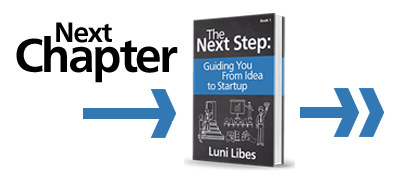Stay ahead of the competition…
Competitive advantage is different from the uniqueness of your solution. The previous chapter asks about what is unique today. Now imagine that you have started your company and launched your product. Your competitors will react and adjust. New competitors will arise. As you look out three, five, and ten years into the future, what will continue to be unique about your product and company that will help you attain critical mass and stay ahead of the competition?
QUESTION 33:
What is my long term, sustainable, competitive advantage?
Such advantages can be patentable inventions or business partnerships or low-cost processes or simply being first in the market (a.k.a. “first-mover advantage”). In some markets, the largest provider gains a size and popularity advantage (a.k.a. “advantage of scale”) which leads toward greater and greater market share (e.g., computer operation systems [Windows], web search [Google], trusted/loved national brands [Starbucks]). In other markets, the lowest-priced competitor has the primary advantage (e.g., Walmart and Hyundai).
Bird Watch—[Competitive advantage]: The initial use of ultra-low-powered radios will allow Bird Watch to expand from tracking wildlife to other larger markets. Early experience in deploying products in that market will keep Bird Watch ahead of the competition as the uses of the product expand into other markets. In addition, these early sales should provide knowledge on lowering the cost of the tags and base stations, which in turn will lead toward greater sales and further decreases in cost due to scale. All of this can be summarized as “first mover advantage.”
Concrete Battery—[Competitive advantage]: Having the lowest-cost solution will allow Concrete Battery to gain initial sales, and those sales will lead to a wave of press coverage. Patents will be filed on all key early learnings, protecting the long-term market by using “intellectual property” protection. And as the market grows in alternative energy production, Concrete Battery will be poised to grow along with it, as a proven, trusted, affordable brand for energy storage.
Close to Home—[Competitive advantage]: There is no patentable invention in running a marketplace for homes. There are unlikely to be any exclusive deals with post-disaster home builders. Nor are there likely any trade secrets possible in the Close to Home business. In short, there seems to be no sustainable competitive advantage. Instead, for this type of business, the key is creating a simple shopping experience that delights customers. An experience that so pleases customers that they tell their friends, tell their neighbors, and tell the mayor of their town, so that the Close to Home brand eventually becomes the trusted brand for disaster recovery.
Ensibuuko—[Competitive advantage]: Ensibuuko has one of the strongest of all competitive advantages: happy customers under a long-term contract. These customers do not need a second, similar service for their account holders. Competitors must convince a SACCO that their service is better, and the timing of that sale must correspond to the end of the contract. Additionally, each of those customers has completed some work to get the Ensibuuko system running for their SACCO account holders, and the tens of thousands of farmers with those accounts have been training on how to use the Ensibuuko service. All that effort creates what is called “lock in,” wherein a new solution would require a massive amount of replication of all effort, retraining by all the farmers, etc. The bigger that setup and training, the bigger the lock in.
In general, the best competitive advantages create a large, so called “barrier of entry” to new competition. This barrier usually means a large amount of time, effort, and/or cost to that competitor. In reality, no startup has any true competitive advantage when it begins.
In the long run, the only sustainable competitive advantage is to continue innovating. After your product has found paying customers, from the first month to the hundredth year, you need to keep listening to those customers, periodically updating your product and pricing to meet the customers’ needs. Remember, Kodak and Blockbuster were once innovative startups, too. Apple, meanwhile, was looking to disappear before it launched the iPod, iPhone, and iPad.
Further Reading
The Innovator’s Dilemma by Clayton Christensen











